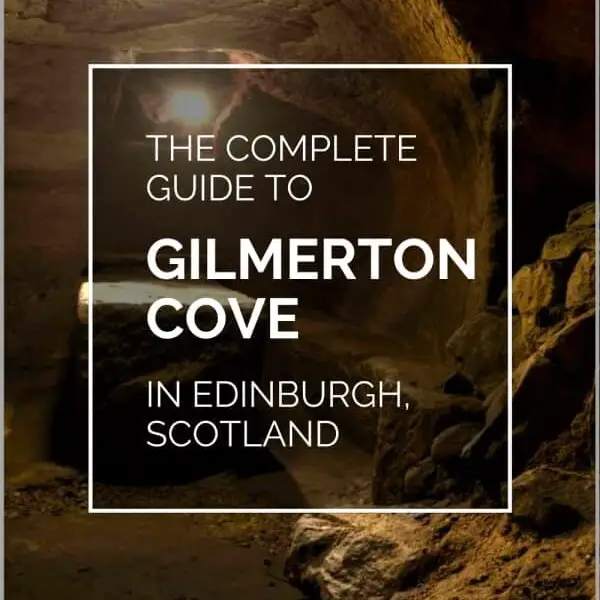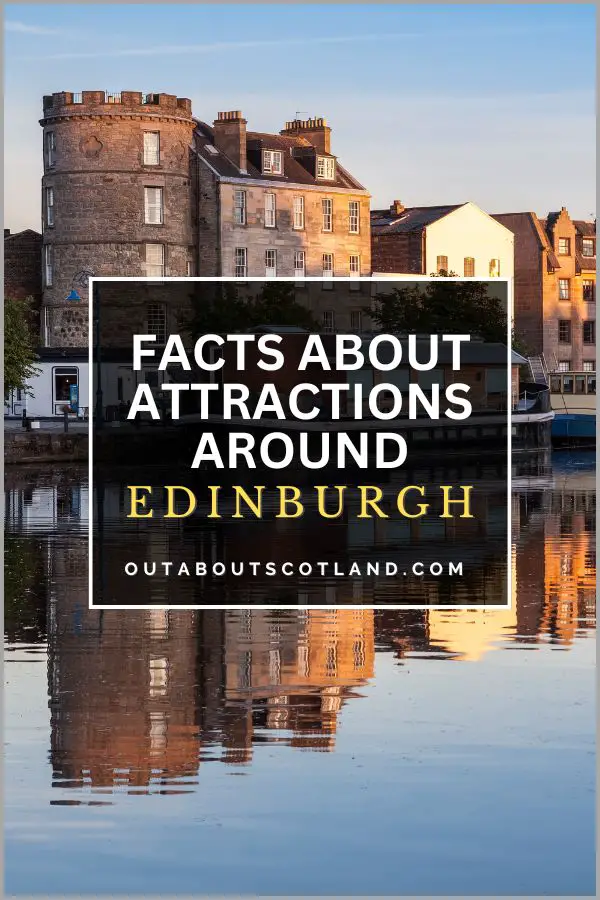Gilmerton Cove is a network of hand-carved passageways and chambers that lie below ground south of the Gilmerton crossroad in Edinburgh. The origins of the Cove are shrouded in mystery with every expert having a different theory as to who made it and why.
The Cove was first officially discovered in 1719 and is thought to have been the work of local blacksmith George Paterson. However, some believe the Cove has a much older history, with theories ranging from it being used as a drinking den for the local gentry, a refuge for persecuted Covenanters, a smugglers’ lair, and even a secret meeting place for the Knights Templar.
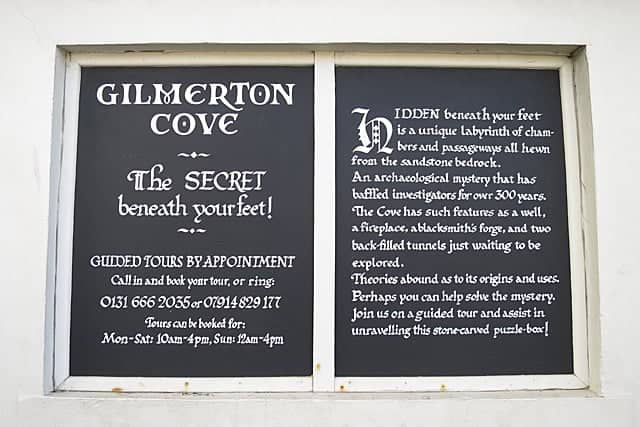
| Address: | 16 Drum St., Edinburgh, EH17 8QH |
| Opening Hours: | October to March there are tours at 12 noon on weekdays and at 12 noon and 2 pm on weekends April to September there are tours at 11 am, 12 noon, 2 pm, and 3 pm on weekdays and at 12 noon, 2 pm, and 3 pm on weekends Tours are available by appointment only |
| Admission Price: | £7.50 for adults £6.50 for students or visitors aged 60 and over £4 for children aged between 5 and 16 £20 Family ticket for 2 adults and 2 children |
| Parking: | Roadside parking around Drum Street |
| Contact: | 07914 829177 |
| Facilities: | Audio visual display |
Overview
Underneath the streets of Gilmerton – an ex-mining village not far from Edinburgh’s city centre – lies one of the strangest mysteries in Scotland. It’s there where you’ll find an underground series of passageways and chambers that were carved deep into the sandstone by hand, although for what purpose remains unknown to this day.
This attraction is one of Scotland’s most unusual heritage sites as it’s hidden beneath a nondescript house in an otherwise unremarkable street, but the subterranean caverns are definitely worth taking time to explore.
Take a guided tour down into the murky depths below Gilmerton and you’ll find surprising features like a fireplace, a well, and even a blacksmith’s forge carved into the rock as well as stone tables and benches. Why they’re there is a mystery that has baffled experts for over 200 years, and I have a feeling it won’t be solved for many more years to come.
What I like about Gilmerton Cove is the fact that it’s away from the city centre so it makes a nice break from the ultra-touristy attractions you’ll find elsewhere in Edinburgh. In fact, I bet you can ask any visiting tourist about the subterranean cavern and they’ll say they’ve never heard of it.
Once you venture deep underground you’ll be able to see for yourself what this archaeological mystery is all about. Was it a witches’ coven? Or some kind of secret meeting place? Did the Romans build it, or is it even older than that? You’ll just have to decide for yourself when you book your tour down there.
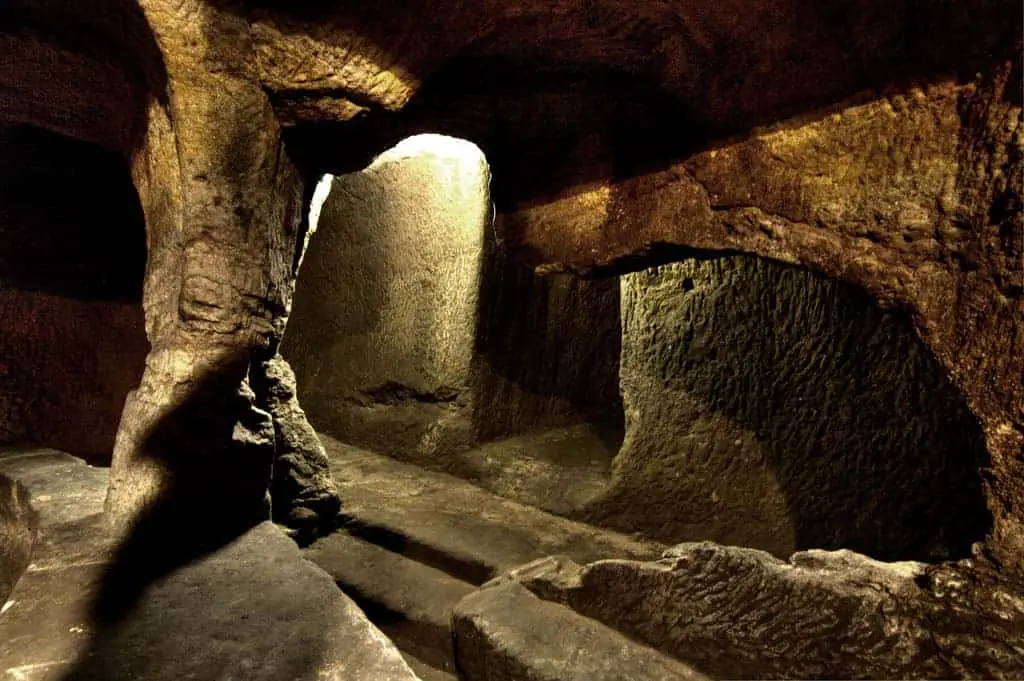
The Highlights
1: Gilmerton Cove is a unique attraction in Edinburgh. The only similar attraction I can think of is the underground vaults tour operated by Mercat Tours.
2: This is a real hidden gem that most tourists don’t know about. If you want to see a side of the city that’s well away from the tourist crowds, this is the place to visit.
Visiting Tips
1: You have to book in advance to view the caves so don’t just turn up on the day expecting to get in. Visit the Gilmerton Cove Facebook page for more information.
2: Getting to Gilmerton Cove by public transport takes around 30 minutes. From Princes Street take the number 29 bus. There are bus stops on Drum Street on either side of the attraction.
3: If you’re looking for other attractions in the area I recommend taking a drive to Vogrie Park which is a real gem, as is Dalkeith Country Park which is a large woodland area featuring lots of country walks, artisan shops, and a fantastic play park.
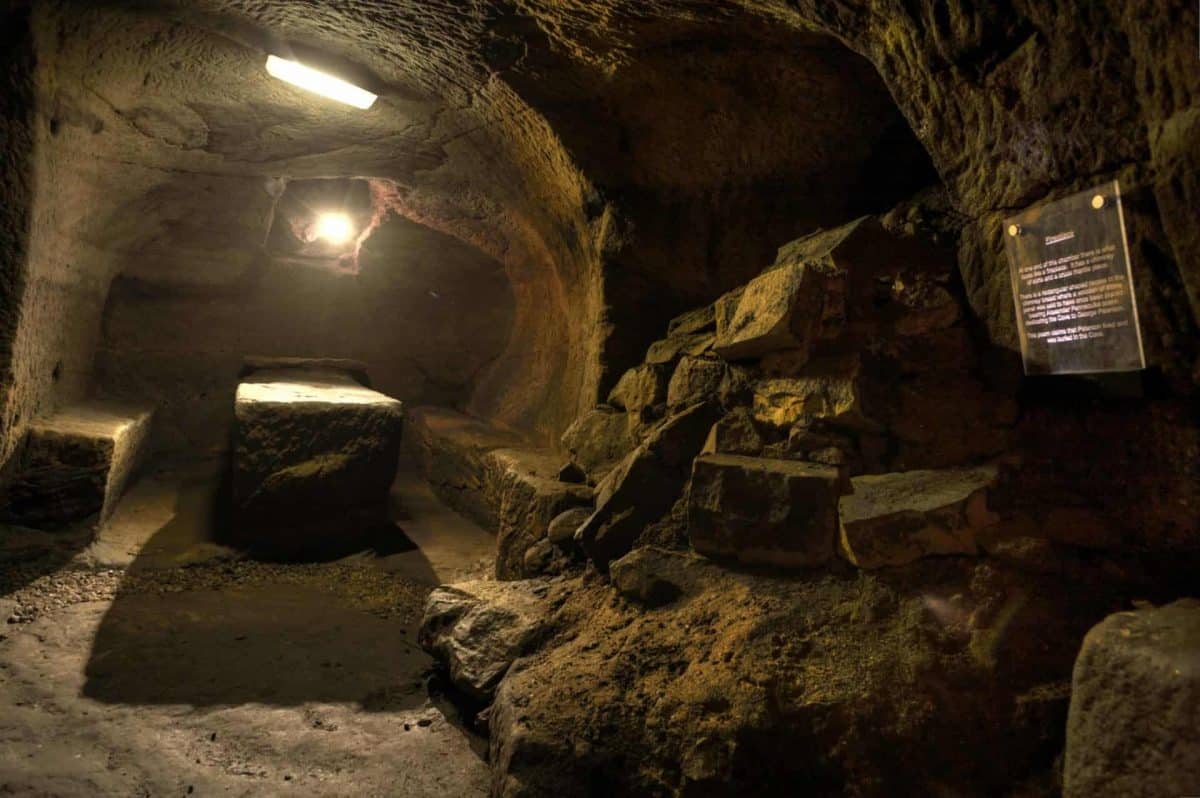
Tourist Information
The caves as we see them today are the result of an extensive restoration thanks in part to both the City of Edinburgh Council and the Gilmerton Heritage Trust, who in addition to excavating the tunnels restored the traditional mining cottage above as a visitor centre.
What’s collectively known as Gilmerton Cove is actually a network of seven chambers and numerous passageways beneath the streets of the suburb, which although old (possibly even ancient) only opened as a tourist attraction in 2003.
Entry is through a typical worker’s cottage from Midlothian’s mining past that houses several audio-visual displays that depict the many theories behind the origins of Gilmerton Cove. You’ll hear about the ghosts that haunt the passageways and discover stories about the network of tunnels that are believed to stretch far beyond some of the collapsed walls.
While you can’t explore the underground tunnels on your own, you can at least join one of the daily tours that take you deep into the mysterious cove with a knowledgeable guide who brings the story of this strange place to life.
It’s genuinely interesting and perhaps a wee bit creepy, so if you fancy seeing something that’s different to the usual tourist traps I highly recommend you visit Gilmerton and take a trip underground.
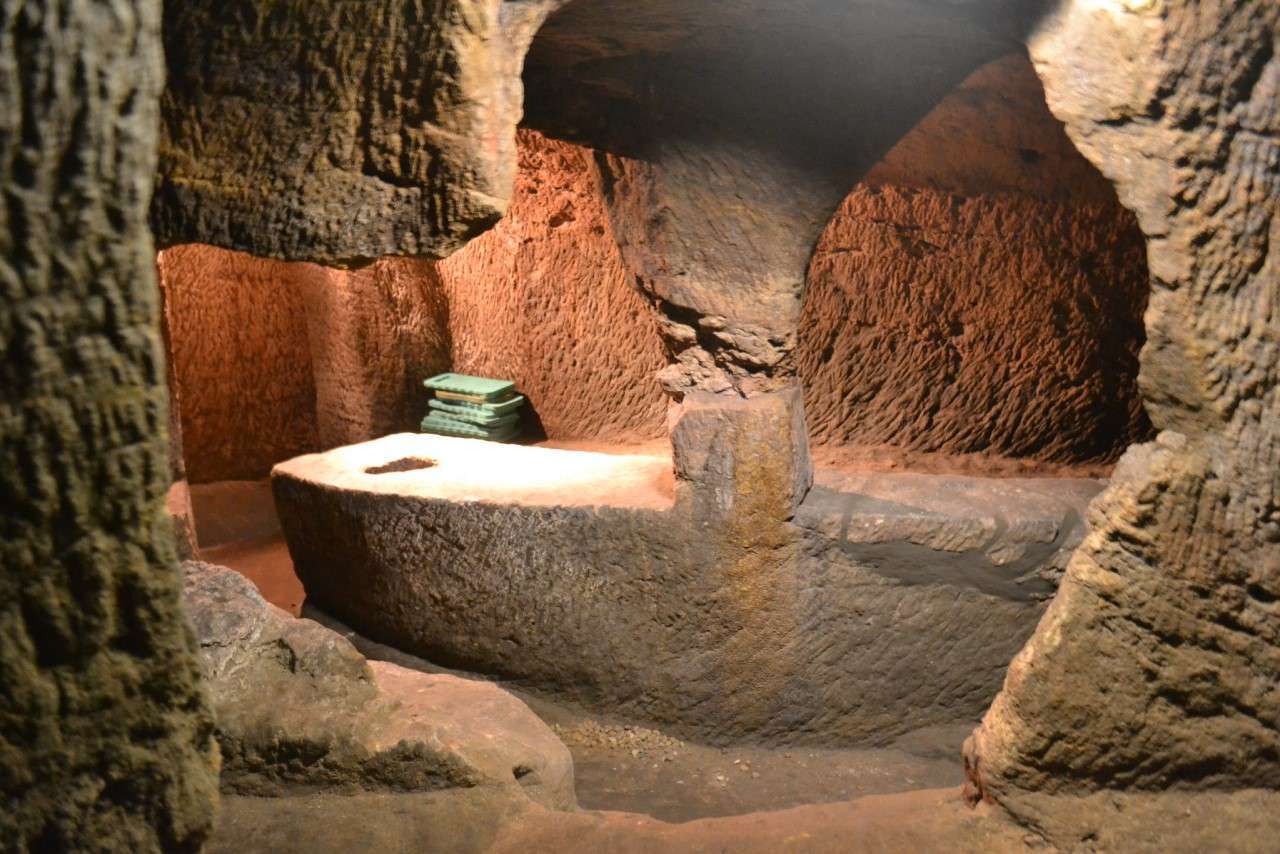
History
Several theories exist as to why the caves were dug, ranging from being used as a secret hiding place for outlawed Covenanters (a religious group who were persecuted in the 17th century) to a secret network of storage chambers for illegal whisky.
One thing we know for certain is that the caves were inhabited by George Paterson, a blacksmith in the 18th century who was recorded as being charged on several occasions for allowing alcohol to be drunk there on the Sabbath. But whether he dug the caves out on his own or simply moved into them after they had been previously abandoned is unknown.
Many of the underground chambers contain stone benches and tables and there’s even a Christian chapel, yet local stories are rife with tales of druids and witchcraft practices that took place in the cove. Interestingly, a recent survey using ground-penetrating radar has shown that the caves are much larger than previously thought and could be up to twice the size that was originally estimated.
So what reasons could there be for this network of caves in Gilmerton? Perhaps they were simply the location of storage vaults for the wealthy, or maybe they were a secret gentlemen’s drinking den. The chances are we’ll never know for certain.

Things to Do Nearby
Dalkeith Country Park. Via King’s Gate, Dalkeith EH22 1ST. 9-minute drive.
One of the largest country parks in Midlothian. There are lots of paths that run through woodland and open fields. The newly-installed Restoration Yard visitor centre includes shops and cafés. A large children’s play park – Fort Douglas – is located alongside the River South Esk.
Craigmillar Castle. Craigmillar Castle Rd, Edinburgh EH16 4SY. 6-minute drive.
A medieval castle located 4 miles from the city centre that was often used by Scottish royalty (including Mary Queen of Scots). The castle has several gardens, a tower house, a large courtyard and modern conveniences like a shop and toilets. Craigmillar Castle Park surrounds the castle which has a variety of woodland walks through it.
Blackford Hill. Observatory Rd, Edinburgh EH9 3HJ. 14-minute drive.
A hillside nature reserve close to the centre of Edinburgh. The hill is home to the Royal Observatory and the Hermitage of Braid – a 1700s estate home and gardens set in dense woodland.
Mavisbank House. Polton Rd, Lasswade EH18 1HY. 9-minute drive.
One of the earliest examples of a Palladian-style villa in Scotland. Mavisbank House was constructed in the 1720s by John Clerk, one of the leading figures of the Scottish Enlightenment. It is partially in ruin but a private trust is attempting to restore it to its former glory. The interior of the house is currently inaccessible to the public.
Frequently Asked Questions
What area of Edinburgh is Gilmerton in?
Gilmerton is a suburb in the south-east of Edinburgh. The address of Gilmerton Cove is 16 Drum St, Gilmerton, Edinburgh EH17 8QH.
What is Gilmerton Cove?
Gilmerton Cove is a series of mysterious hand-carved passageways and chambers that lie below ground to the south of Gilmerton crossroads. The origins and purpose of the Cove continue to be a mystery. Some believe that the Cove was the work of an 18th-century local blacksmith, George Paterson. Others believe the Cove is much older, possibly even the work of the Knights Templar.
How do I get to Gilmerton Cove?
The best way to get to Gilmerton Cove is the number 3 bus service operated by Lothian Buses. The journey from the city centre to Gilmerton takes around 20 minutes and costs around £2.
What is the Gilmerton Cove LiDAR survey?
LiDAR, which stands for Light Detection and Ranging, is a remote sensing method used in surveying to measure the exact distance of an object on the earth’s surface. It involves illuminating the target with laser light and measuring the reflection with a sensor. In the case of Gilmerton Cove, the LiDAR survey was used to map and understand the complex structure of the caves.

